Last Updated on March 5, 2023
Drywall anchors are an essential part of any home improvement project or construction project, as they play an important role in ensuring the stability and longevity of any structure.
Depending on the type of anchor used, drywall anchors have the potential to hold a significant amount of weight, allowing you to suspend heavy objects from your walls or ceilings.
Before undertaking a large home improvement endeavor, it’s important to understand just how much weight each type of drywall anchor can bear so that you can be sure your anchors won’t fail.
This guide will cover the different types of drywall anchors and the weight capacity they can support. We’ll also discuss choosing the right anchor for your project, so you can rest easy knowing your walls are secure.
How Much Weight Can A Drywall Anchor Hold: Depends on Types
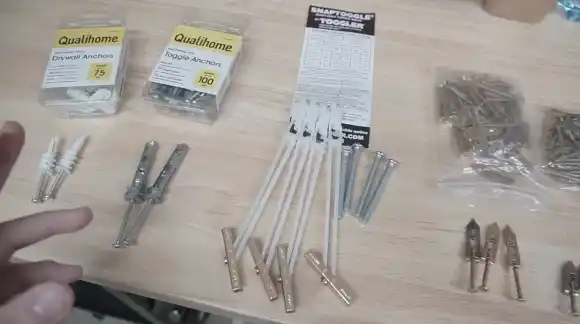
When it comes to hanging items on drywall, it’s important to understand the various classifications of drywall anchors and the weight capacities they can support.
Knowing the correct anchor type and its weight capacity will help ensure the wall mount or item you’re hanging remains secure.
Here are some of the most common types of anchors, their approximate weight-bearing capacities, and where they should be used:
Type 01: Anchors for Display Mounts
The anchors for display mounts have a maximum weight capacity of up to 200 lbs (90 kg) against concrete and up to 75 lbs (34 kg) in drywall.
These anchors are designed specifically for mounting heavy displays and other items on a wall, as they can handle the additional stress these items put on the anchor itself.
They also feature an easy-to-install design that allows you to quickly and easily attach them to concrete and drywall surfaces.
Type 02: Heavy-Duty Drywall Anchors
Heavy-duty drywall anchors have a higher weight capacity than standard anchors, with a maximum rating of up to 175 lbs (79 kg) in concrete walls and up to 50 lbs (23 kg) in drywall surfaces.
These anchors are designed to handle heavier weights without putting unnecessary strain on the anchor or the surrounding material.
Additionally, they feature an easy one-step installation process that makes them simple to use even when working with tight spaces or difficult materials like concrete.
Type 03: Toggle Bolts
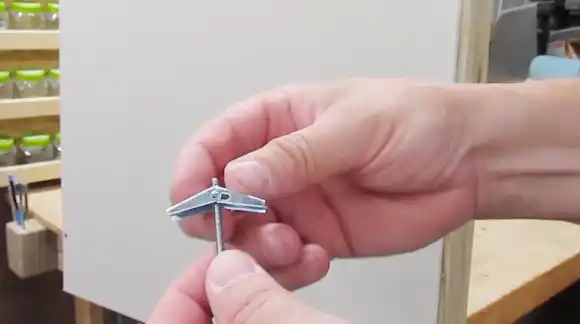
Toggle bolts have an impressive weight capacity rating of up to 225 lbs (102kg) in concrete walls and can handle 75 lbs (34kg) in drywall surfaces.
These bolts are especially useful for heavier items such as large monitors or any other displays because they provide extra stability by using two wings that open behind the wall during installation providing much more support than a standard anchor would offer alone.
Additionally, toggle bolts are designed specifically with larger openings to fit through thicker pieces of material or larger-sized holes without issue.
Type 04: Molly Screws For Sheetrock
With their unique thread patterning, Molly screws offer greater holding power than traditional screws, even on thinner sheetrock materials where other screws may fail because of their size or length restrictions. They provide extra grip even with thinner sheetrock materials.
Molly screws can also be used to secure heavy items like speakers or monitors without damaging the screw or the wall surface. They can support up to 175 lbs (79kg) in concrete walls and up to 50 lbs (23kg) in drywall, so they are perfect for securing heavy items like monitors or speakers.
Factors that Affect the Weight Capacity of Drywall Anchors
Knowing the factors that affect the weight tolerance of drywall anchors offers users a wealth of benefits as these are incredibly beneficial for users. Several factors affect the weight-bearing capability of drywall anchors, including the design of the anchor, installation method, and type of wall material.
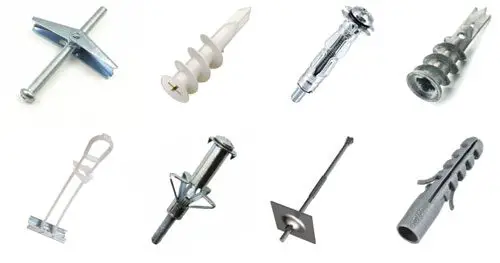
Users should be aware of these factors to make sure they choose an anchor that is suitable for their particular application. Knowing how different elements impact weight capacity can help users save money and avoid damage to their walls.
Factor 01: Size and Type of Anchor Used

The type and size of anchor used will significantly impact the weight-holding ability of drywall anchors. Anchors made of light-duty plastic are ideal for hanging lightweight items such as pictures and shelves.
For hanging heavier items like mirrors, use medium-duty plastic anchors. You should use heavy-duty metal anchors on your drywall when hanging heavy items, such as large wall art or appliances.
The material and design of the anchor will affect its effectiveness. Thinner metal anchors may provide greater support than thicker plastic ones. The shape of the anchor may also influence its ability to hold weight.
Some anchors are designed with expansion wings that spread out behind the drywall when tightened, providing more secure support than straight shafts.
Factor 02: Material Being Held
The material being held will also affect the amount of weight a drywall anchor can support. Soft materials like wood are much easier to support than dense materials like metal, which put more stress on an anchor and require increased strength.
Additionally, different metals require different types and sizes of anchors due to their varying densities; aluminum is softer than steel, so it requires smaller drywall anchors that are sufficient to hold it securely in place.
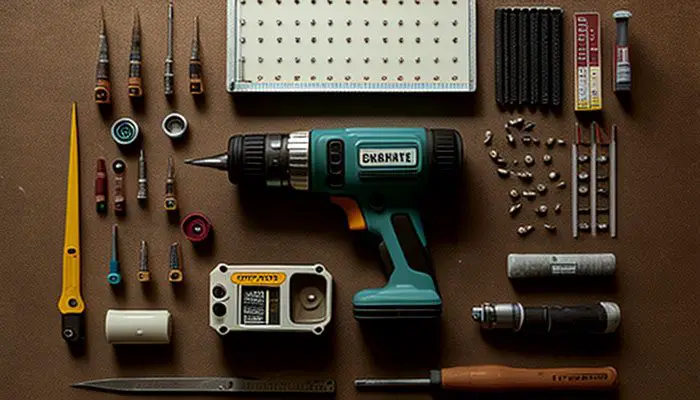
Materials with larger surface areas will cause more pressure on an anchor because they have a greater tendency to slip or pull away from the wall if not properly secured, so heavier weights may require additional anchoring methods or supports for stability.
Factor 03: Type and Condition of Drywall Surface
The type and condition of the drywall surface will also determine how much weight a drywall anchor can support. If the drywall has been damaged or is old and deteriorating, it is less likely to offer adequate support for heavier objects. If nails are driven too deeply into weak sections, they may actually break through them.
Additionally, certain types of drywall may have unique requirements regarding appropriate anchoring methods. For example, acoustic tiles often require specialized construction adhesives instead of traditional screws or nails due to their softer composition.
Factor 04: Environmental Conditions Such as Moisture, Vibration, and Temperature

Environmental conditions such as vibration, moisture, and temperature can also affect how well a drywall anchor performs its job. High humidity levels can cause corrosion in metal fasteners, substantially reducing their holding power and strength over time.
This is particularly true in coastal areas where saltwater exposure is frequent. Likewise, vibrations from walking by or nearby traffic can cause screws to loosen over time, weakening support unless they are regularly checked and tightened periodically.
Also, extreme temperatures (both hot and cold) can result in metal fasteners expanding or contracting, resulting in lower holding power and weaker support if not addressed periodically.
Factor 05: The Thickness of the Drywall Sheet
The thickness of the drywall sheetrock is another important factor. This thickness factor affects the weight accommodation of drywall anchors. Thicker sheets offer better structural integrity than thinner ones due to increased density allowing them to bear more load without degrading quickly over time.
However, this isn’t always true. Sometimes, even thicker sheets fracture at points due to the excessive load being placed unevenly across multiple spots. Hence it’s important to always distribute the load evenly across multiple points when attaching heavy objects, regardless of the sheetrock thickness used.
Additionally, there are sometimes added layers of insulation between 2 layers (or between one layer & substrate beneath) of sheetrock. These additional layers make these thick sheets behave similarly to thin ones reducing overall strength. Hence it’s important before installation & dependent upon application.
One must check what kind, dimensions, and thickness sheetrock exist at an intended point so appropriate anchoring devices & methods can be employed considering all factors mentioned above, thus offering the best possible outcome.
Factor 06. Number and Spacing of Screws Used to Secure the Anchor
The number and placement of screws used to secure a drywall anchor are very important factors that determine the weight capacity of an anchor. The more screws used, the stronger the hold will be and the greater the weight capacity it can have.
Additionally, when more screws are used, they should be spaced evenly around the perimeter of the anchor for even distribution of weight across all screws.
This ensures that no single screw carries more than its share of the load and reduces pressure on any individual screw, increasing overall strength and weight capacity.
Factor 07. Strength Characteristics of the Anchor Material
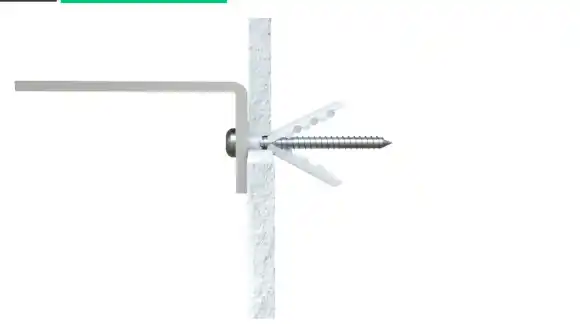
The material from which a drywall anchor is made also plays a critical role in determining its ultimate weight capacity.
Typically, metal anchors from steel or stainless steel provide much higher strength than plastic anchors. This is due to their superior material properties, such as higher tensile strength and fatigue resistance.
Although some plastic anchors may offer adequate strength for lighter loads, metal anchors are often preferred for supporting heavier objects as they provide increased safety margins.
Furthermore, different types of metal materials may offer different levels of strength depending on their specific alloying elements, which also affects the ultimate weight capacity attainable by an anchor made from it.
What are the Strongest Drywall Anchors?
The strongest drywall anchors are also known as toggle bolts, and they are the most secure type of wall anchor.
They are inserted into a pre-drilled hole and then expanded when a screw is inserted into them. The toggle bolt’s wings provide an incredibly strong hold, supporting heavier items than plastic or metal anchors.
They are also ideal for use in hollow walls, where plastic or metal anchors aren’t suitable. Additionally, they come in various sizes and finishes to match the work being done.
Can Drywall Anchors Hold a Monitor?
Yes, drywall anchors can be used to hang a monitor. The monitor weight should always be considered when choosing the right anchor type. Heavy monitors require stronger anchors, such as molly bolts or toggle bolts, that can support more weight than other anchors.
When hanging a large, heavy monitor on drywall, it is important to use multiple anchors for extra stability and safety, especially if you plan on mounting your monitor above eye level.
What Is Too Heavy to Hang on Drywall?

Anything over 50 pounds may be too heavy for drywall alone, even if high-strength drywall screws or toggle bolts and wall anchors are used.
For heavier items, it is recommended to install additional supports, such as backing boards or wall studs, behind the area where you will be hanging the item.
This will ensure that it is secure and stable enough to hold its weight without putting too much stress on the drywall itself.
How Good are Drywall Anchors?
Drywall anchors are great for hanging wall decorations, shelves, and other heavy items. They provide extra strength and stability to the wall and ensure that what you hang is securely in place.
The most common drywall anchor is a toggle bolt, which uses a spring-loaded mechanism to spread wings inside the wall cavity when tightened in the hole, providing a secure hold.
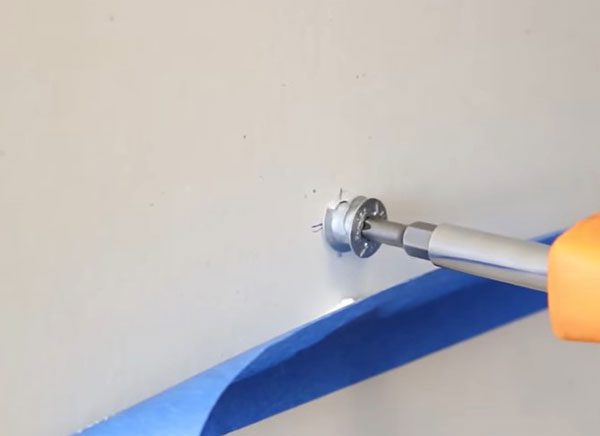
Other drywall anchors include self-drilling, screw-in, molly bolts, and plastic expansion anchors. Each type of anchor has advantages and limitations depending on the types of materials you are attaching, the size of the item being mounted, and the amount of weight it will bear.
Choosing the correct type of anchor for your needs can help ensure that your items will stay safely in place with minimal damage to walls or ceiling surfaces.
Final Thoughts
Using drywall anchors is an incredibly versatile and effective way of hanging heavier items on walls without causing any damage.
You should always check the specs for each type of drywall anchor before choosing the right one, as this will ensure you get the right one for the job.
By understanding the purpose and different types of anchors available, as well as how they work and their uses, you can know that your wall-mounted items will stay in place safely and securely.
With all this information in mind, you can now confidently hang heavy objects from your walls, knowing exactly how much weight a drywall anchor can sustain.



